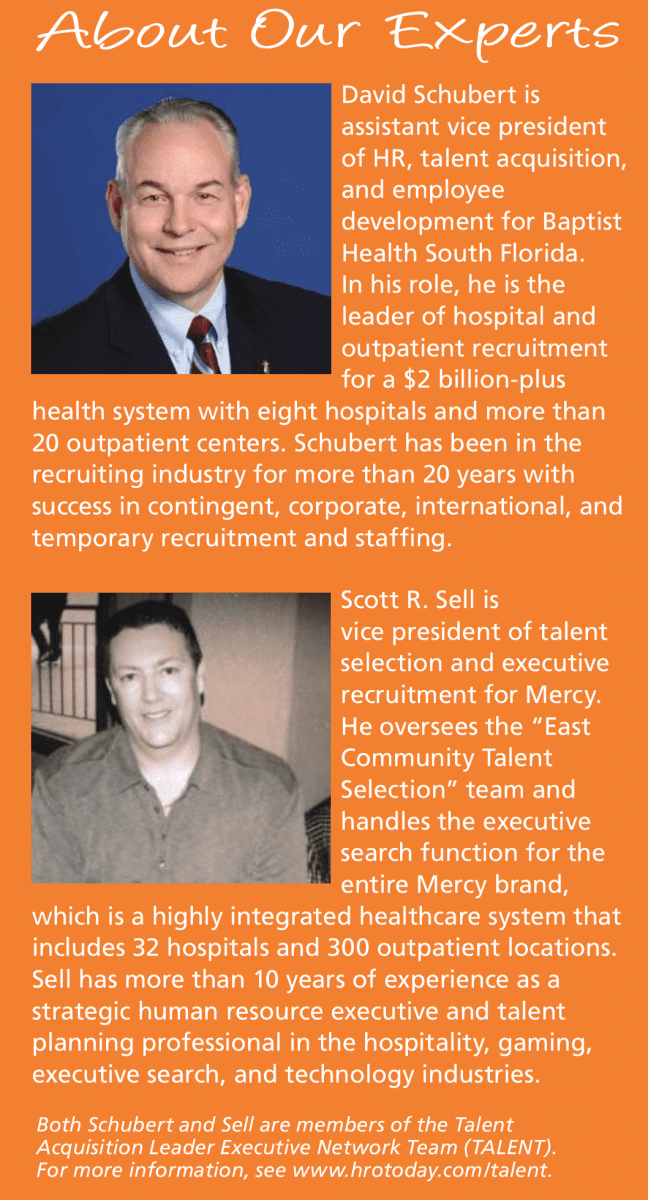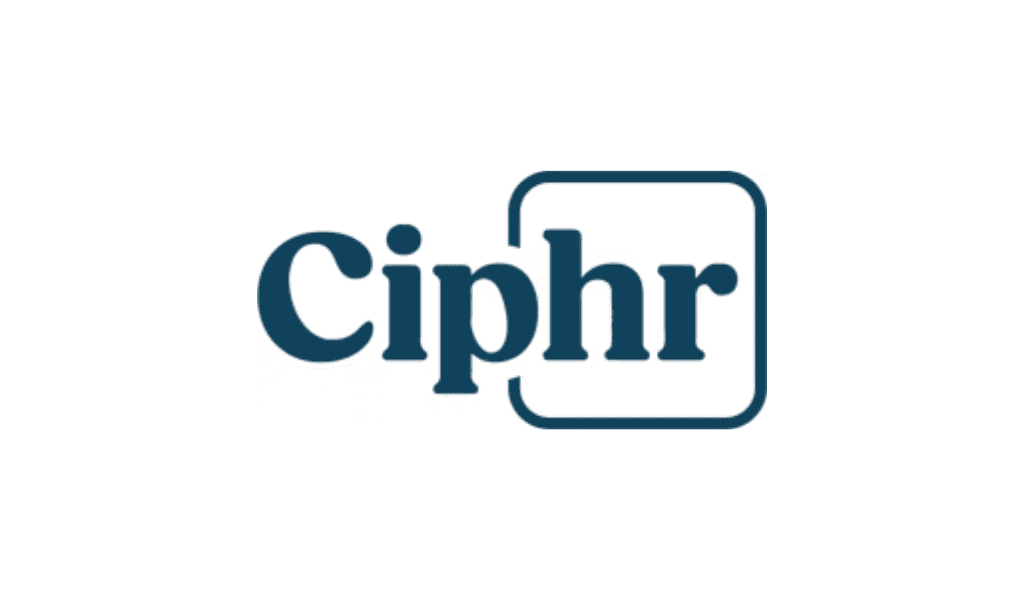Two talent leaders share strategies that are ensuring success in the candidate-driven market.
By Debbie Bolla
Todays’ talent acquisition leaders have a very clear understanding of how each step in the hiring process can impact the end result. Sourcing strategies are critical in finding the right candidates and then once found, there is great pressure to deliver a positive experience in order to attract that key talent. Here, David Schubert, assistant vice president of HR, talent acquisition, and employee development for Baptist Health South Florida, and Scott R. Sell, vice president of talent selection and executive recruitment for Mercy, share their proactive approaches in today’s tight talent market.
HRO Today: What has been the most effective approach to attracting top candidates for your organization?

David Schubert: The most effective approach to attracting top candidates for our organization has been promoting our employee value proposition through our candidate management system. We have more than 600,000 contacts and have sent more than 12 million emails year-to-date. This is an increase from 10 million in 2017. Considering it is our second largest source of hire, we have been successful in educating our leads about Baptist Health and what we have to offer to compel them to want to work here and apply.
Scott Sell: I’m not trying to simplify this but in my opinion, it comes down to engaging with your candidates and treating candidates with respect. We know that talent has many options at their disposal so it comes down to finding ways to differentiate your organization from other employers. Transparency is important in addition to clear communication. The candidates that you hire will generally love you; it’s how you treat those that you don’t hire that can differentiate you in today’s market.
HROT: Are you leveraging any new technology like artificial intelligence (AI) or machine learning? If so, what tools are you using and what results have you experienced?
Schubert: In the beginning of the second quarter of our fiscal year, we started working with a recruitment software used to find and engage top talent. They have an algorithm in place that predicts when talent is most likely to switch jobs based on trends in tenure. Using this tool, we have made five hires in six months in hard-to-fill areas.
Sell: We are leveraging AI in many areas. Our career page is ready to take on a new look and feel due to a partnership that we have established with Phenom People. We are confident that this will create a much better candidate experience -one that is similar to what consumers experience and expect when using Amazon or Netflix. Jobs will be teed up to candidates based upon their search behavior. CareerBuilder has also done an excellent job in revamping their platform to leverage AI. Seventy percent of the hires we made from CareerBuilder last year can be attributed to jobs that were referred to the candidates verses the traditional method of searching jobs in their database.
HROT: Have you implemented any new sourcing strategies?
Schubert: We recently began using lead generation forms on Facebook in July. We created an ad that delivers the form to users on Facebook based on their interest and education relevant to healthcare. Look-alike audiences are also used to broaden our reach to users who may not disclose their interest or education but because of their behavior on Facebook, show to be similar to those we could identify. We generated 278 leads in the first month, which is about 25 percent of what we generated in five months driving users to our talent community landing page.
HROT: How are you working to improve the candidate experience?
Sell: Given the fact that unemployment remains at an all-time low, it is a candidate-driven market. In order to compete for top talent, it is imperative to provide candidates with a positive and user-friendly experience. Candidate behavior has also changed and with this, candidates are no longer searching for jobs. They expect the jobs to come to them.
HROT: How have you expanded the interviewing process?
Schubert: Our evidence-based selection interview training for leaders was revamped and improved as well as moved to an on-demand video platform. This training is meant to help educate leaders on using evidence-based practices in the interview process to make the best hiring selections, which helps maintain and improve our overall quality of hires. The on-demand feature makes the training easily accessible to all leaders in the organization. If they ever require a refresher or want to look back at something they learned, they have the tools when they need them the most. Training includes creation of clinical technical questions, realistic job preview questions, behavioral interviewing with drill down, unconscious bias and legal training, standard structured interview guides, peer interviewing, and standardized documentation and decision process.














